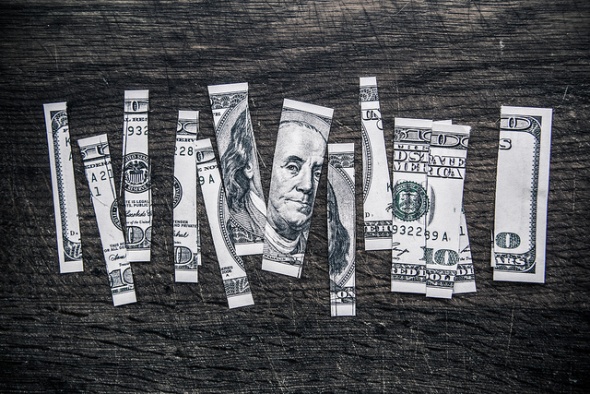
The Great American Inequality
“A Walmart employee earning the company’s median salary of $19,177 would have to work for more than a thousand years to earn the $22.2 million that Doug McMillon, the company’s chief executive, was awarded in 2017.” (New York Times, May 25, 2015). Astonishingly, the gap between top and middle is even greater in some other corporations. Walmart is not the only or even the biggest culprit. These economic chasms are characteristic of U.S. capitalism at this point in history and not a reflection of the evil deeds of one corporation.
Economists and sociologists use sophisticated statistics to depict levels of economic inequality, but none give you this kind of stark picture of the grotesque reality. You can look all day at graphs of the standard measure, the General Index of Inequality, better known as the GINI coefficient, without gasping. GINI consists of two curves on an XY graph. One curve is hypothetical and portrays what an equal distribution of income or wealth looks like. The second curve is real and shows the actual distribution. The greater the distance between the two curves the greater the inequality.
GINI is useful for comparisons across nations and times. But, like most social statistics, it is bloodless. The comparison that opens this piece, in contrast, elicits awe, outrage, punctures through this society’s “equal opportunity” myth used to justify the unfairness of the economic system.
To realize that it would take the average Walmart worker around 13 lifetimes to make what the top honcho makes in a single year puts things in perspective. It boggles the mind. It exposes as ludicrous the idea that the children of $22.7-million-a-year-man Doug McMillon and those of $19,177 every-woman-on-the-sales-floor could have the same opportunities in life.
The Great Inequality has a greater impact today—and will have for generations to come—than anything else happening in this country. (Climate change, the other biggie, is inherently a global problem). But the day-to-day outrages committed here under the Trump administration understandably have a higher profile. Ripping families apart at the U.S.-Mexico-border, putting children in cages, is a more urgent and dramatic crisis, worthy not only of all the media attention it is getting but also of the recent condemnation by the United Nations as a violation of human rights by the United States.
In contrast, the ever-increasing level of inequality is a complex, relatively slow-motion phenomenon difficult to portray on television and usually described in arcane terms such as GINI and the share of GDP going to capital versus that accruing to labor. Yet it is a scandal with huge life-and-death consequences for millions of people and a defining measure of the moral standing of this or any society.
Where does the United States stand on that defining moral measure?
Things are bad and getting worse. There are big costs in being the most unequal rich society on earth. At the lower end: the persistence of hunger and malnutrition among children, leading to stunted brains; denial of health care, leading to avoidable death and suffering; enormous losses in human potential and foregone productivity as higher education becomes ever less affordable for the majority; masses of people incarcerated for lengthy periods of time because they lack money for bail or serving long prison sentences for non-violent drug offenses, a huge waste of public money that could be put to better uses.
At the top, consequences include the perversion of democracy by money, often to get policies enacted that generate more inequality. Obscene displays of extreme wealth by public officials and private citizens. The proliferation in the production of luxury items like mega-yachts and private intercontinental airplanes (now claimed as an entitlement even by leaders of some religious congregations), things that add little to the common welfare. General wellbeing continues to decline as infrastructure crumbles because rock-bottom taxes on the rich means disinvestment in public goods like bridges, public transportation systems, schools, and scientific research.
How do we change this? There are hopeful signs. Younger people, who powered the improbably successful Bernie Sanders campaign, are fed up with the apologetics of savage capitalism and are not afraid to identify as socialists. More progressives are running for office and winning. Even the Democratic Socialists of America are recruiting converts at a brisk pace. The demographics of the country are changing in such a way that the people who most favor government intervention in the economy to level the playing field—Latinos—are growing fast. Blacks, who according to surveys are just behind Latinos in favoring such government action, have been steadily acquiring more power.
Perhaps in politics, as in physics, each action brings and equal and opposite reaction. The eruption of all the evils dormant within the national soul and awakened by the Trump—white supremacy, top-down economics, sexism, homophobia, environmental depredation—might just boomerang and finally result in the age of Aquarius and the greening of America expected by the 60’s generation — but that never happened.


